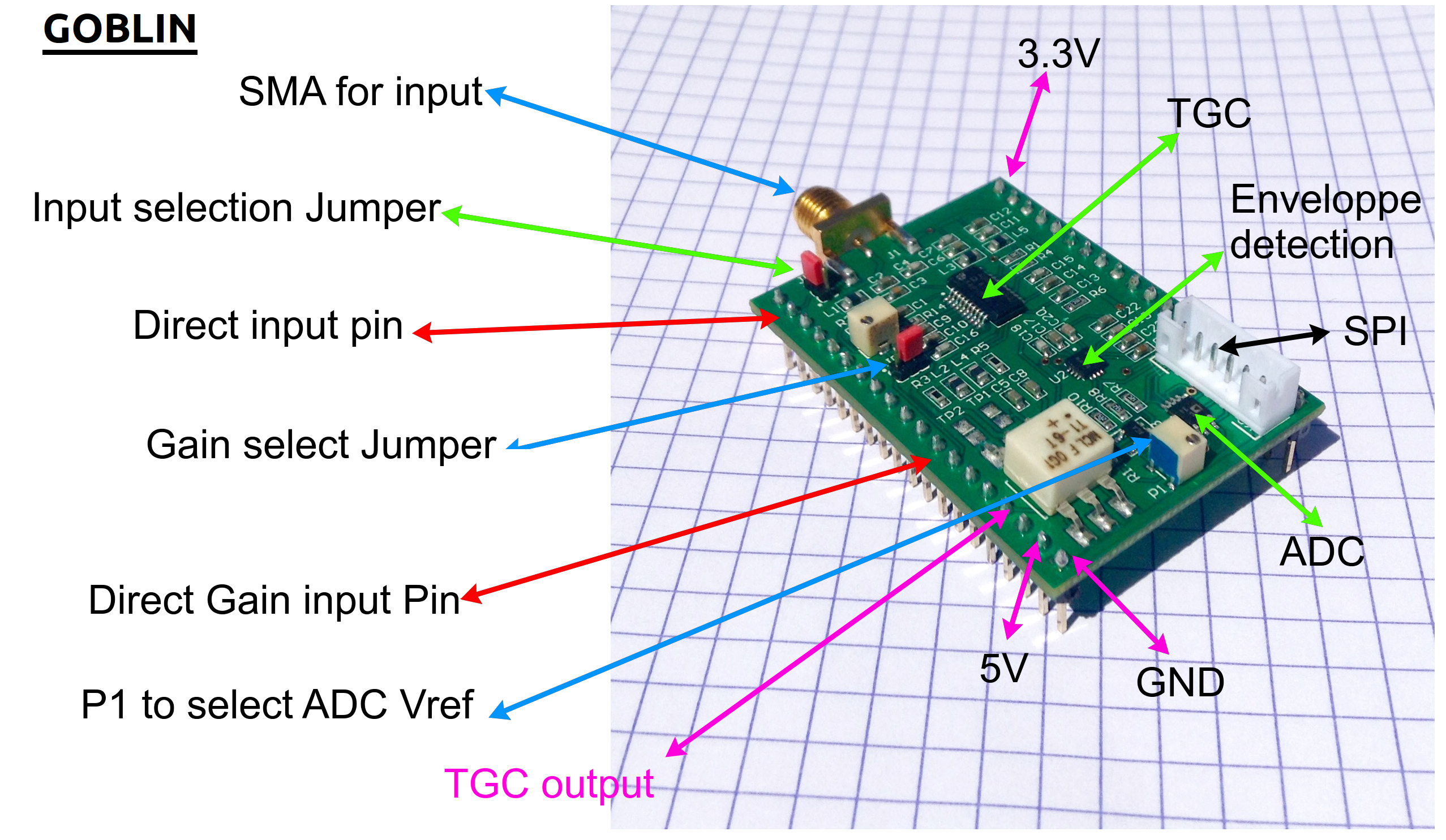-
Ultrasound visualisation tool on streamlit / web service
02/09/2020 at 16:23 • 0 commentsBeen a while since I posted something here, but long story short modules have shifted to FPGAs, using a nice Lattice HX4K as the foundation for this.
These images come from a streamlit server that control a un0rick.cc board - and display those. Only A-mode for the moment, on a reflector, but why not going to a probe when I've got time ?
More about the physical setup there : http://un0rick.cc/rpi-setup
-
Testing the new mother board with 'dirty' piezos
05/01/2017 at 08:47 • 0 commentsBeen playing along with this new motherboard and plugged in a Raspberry Pi W, along with its high-speed ADC board (here for the hackaday page) - you will note that the power use of 2W is somehow not bad for a whole ultrasound system - without motors):
![]() In smallish (but better quality here), I've done the tests on cheap (2$) piezos without backing, for which I didn't know the frequency. The central frequency was around 1.9MHz, and the shield was enough to do some FFT'ing !
In smallish (but better quality here), I've done the tests on cheap (2$) piezos without backing, for which I didn't know the frequency. The central frequency was around 1.9MHz, and the shield was enough to do some FFT'ing !![]()
-
The motherboard is here
04/06/2017 at 20:05 • 0 commentsand it's working!
![]() And clean when unloaded:
And clean when unloaded:![]() The next gen will be smaller ! No need for power supply yeayy
The next gen will be smaller ! No need for power supply yeayy -
Article on Journal of Open Hardware
03/22/2017 at 21:35 • 0 commentsYeay! An article detailing the work done on this project was submitted, accepted and publish by the Journal of Open Hardware =)
Arduino-like development kit for single-element ultrasound imaging. Journal of Open Hardware. 1(1), p.3. DOI: http://doi.org/10.5334/joh.2
*happy*
-
Doing a high-speed ADC for Raspberry Pi
03/20/2017 at 22:05 • 0 commentsI'm quite tired of not having 10Msps+ ADCs as simple, easy to use Raspberry Pi pHAT. That's why I'm doing one - will be helpful to have one ready to work for my Pi Zeros!
Follow and like the THP Project at https://hackaday.io/project/20455-doing-a-high-speed-rpi-phat-bomanz =)
![]()
-
A motherboard to rule them all
03/19/2017 at 22:57 • 2 commentsI wanted to have a small board to connect the different modules.. and make room for two Raspberry headers (one for a raspberry, the other for a cape... say a 20Msps ADC =) ) - especially now that I have this wonderful pi W to play with!
It'll look like something like...
-
Business intelligene on handheld ultrasound probes
01/16/2017 at 21:15 • 0 commentsAll FDA requests for approval are available on the FDA website. To ask
for an approval, the entity requesting the approval base themselves on
previous devices, the "predicates". It's therefore quite easy to map the
predicates graph.
It's fascinating to see how these resources map the history and evolution of the probes!
Attached below is the graph of these predicates.. leading ultimately to the state-of-the-art Clarius probe.
![]()
-
Overview of a ultrasound system
01/15/2017 at 21:35 • 0 commentsI realized I was missing an overview of the system that was being designed. All in all, here it is summarized, the usual architecture found in the literature:
![]() The microcontroler is at the moment a Feather WICED, the transducer one found on eBay, and the two custom boards (the pulser and the analog processing) are home made =)
The microcontroler is at the moment a Feather WICED, the transducer one found on eBay, and the two custom boards (the pulser and the analog processing) are home made =) -
Building a ultrasound phantom from breadboard components
12/18/2016 at 15:49 • 0 commentsThe objective of this session was to
- Test the (lower-speed) acquisition using an arduino's ADC (~2Msps), which also streams over wifi, over UDP.
- Build and test a very basic, yet accurate, phantom
Setup
The classical one. Using the pulser module, analog processing module, and a arduino-like to capture and stream the data. Piezo moved by a servo (module).
Script used were:
nc -lu 5005 > 20161217-222737.data-- to acquire the raw data streamed by the arduino on port 5005python CreateCSV2.py 20161217-222737.data-- using the CreateCSV2 script to generate proper data using the good format from the raw data file. This was later consolidated in a single image.
Acquiring images
Presented non scan converted
Comparing the image with the phantom
I aggregated the 4 images in one image with the rebuild script which yielded
and scan converted it:
- The acquisition is not too bad, even using an arduino
- The servo may be the limiting element in terms of lateral resolution
- the breadboard pitch is 0.1 inch, 2.54mm. We resolve this.
- There is an issue with repetition echoes: it may be worth waiting more than 300us between shooting lines.
Next steps:
- Using a gyro
- Using a RPi0 to connect to the analog processing onboard ADC.
-
The analog processing is on Tindie
11/03/2016 at 08:57 • 0 commentsYeah! After some time, glad to have the module on Tindie at https://www.tindie.com/products/kelu124/ultrasound-imaging-analog-processing-module/ . That's the same one as the logs below, useful to have fun with ultrasound signals.
![]()
Murgen: open source ultrasound imaging
An open-source ultrasound imaging dev kit side project
 kelu124
kelu124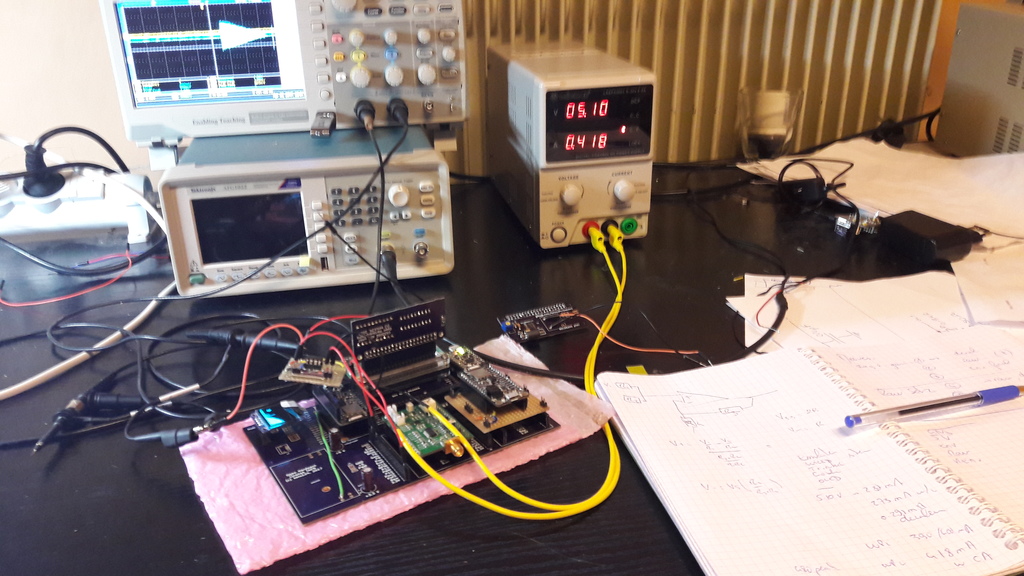 In smallish (
In smallish (
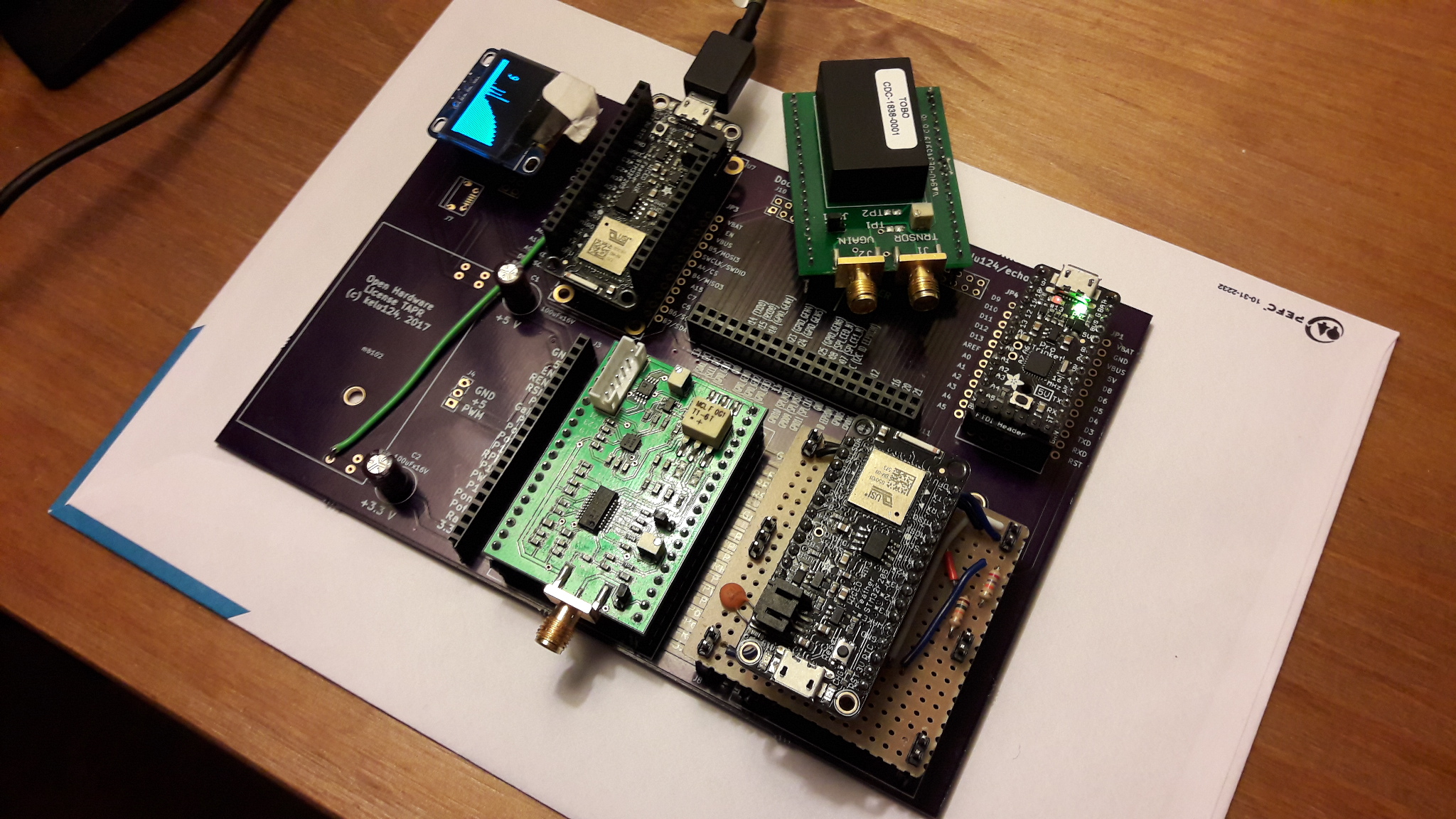 And clean when unloaded:
And clean when unloaded: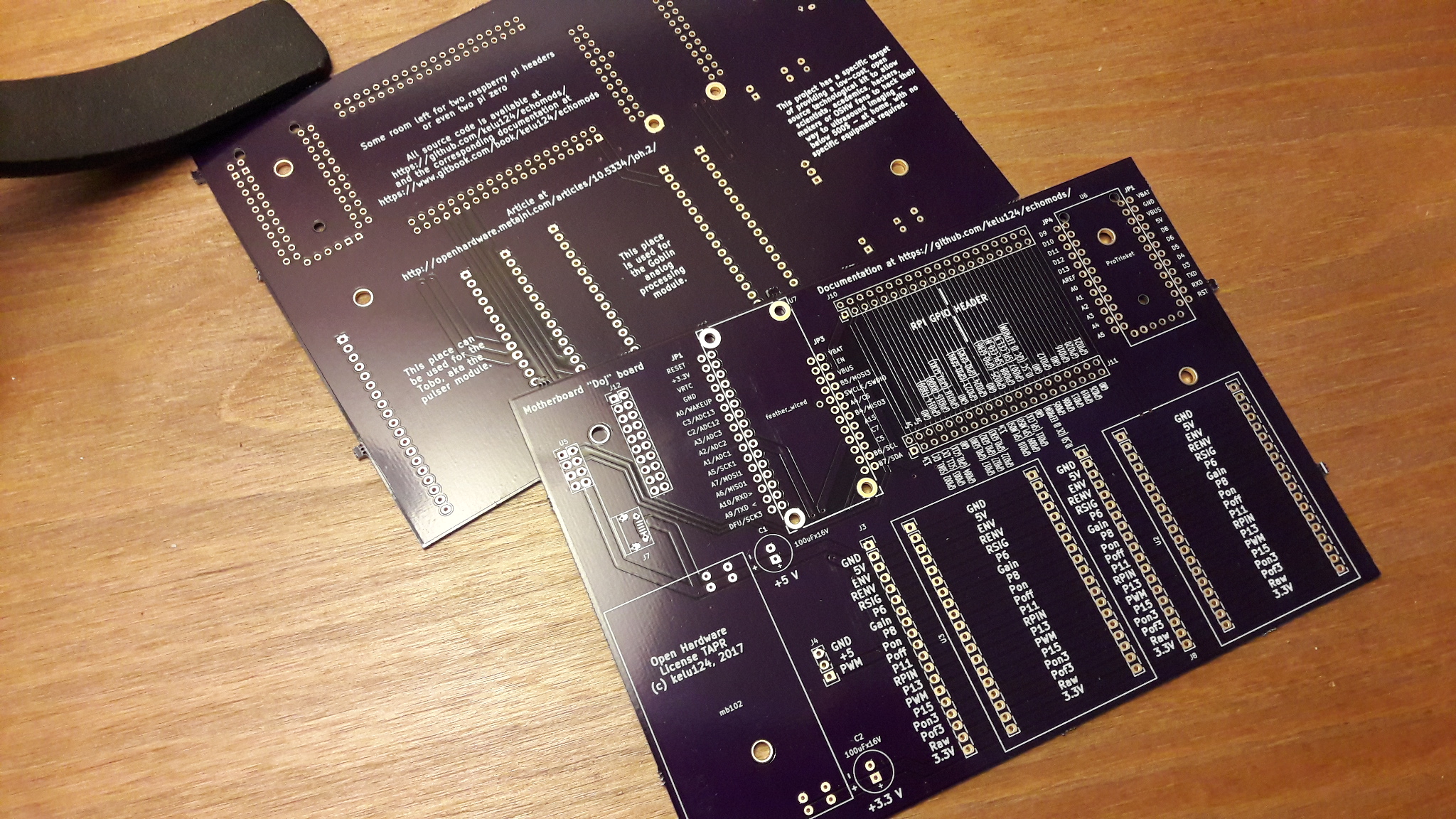 The next gen will be smaller ! No need for power supply yeayy
The next gen will be smaller ! No need for power supply yeayy
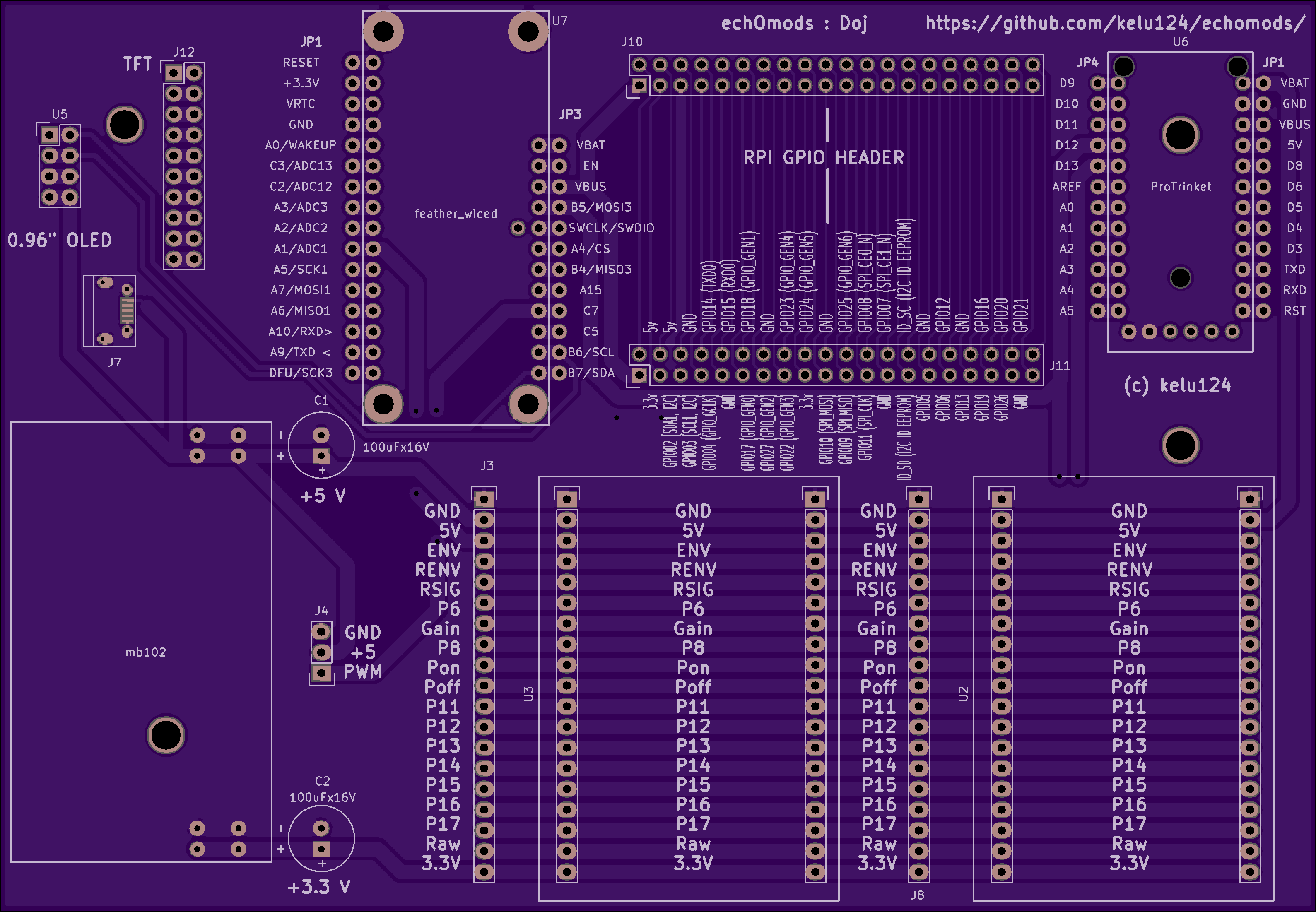 at
at 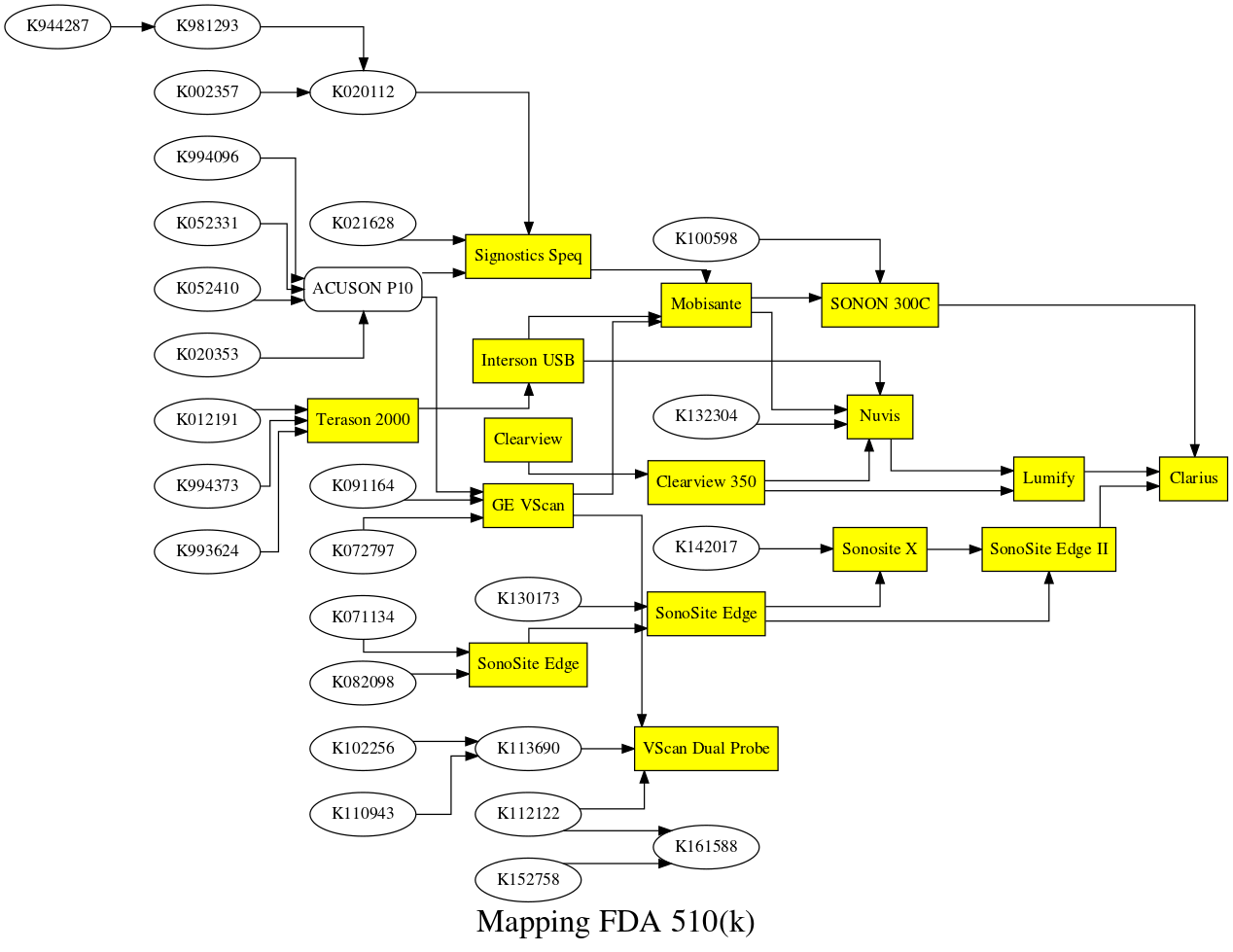
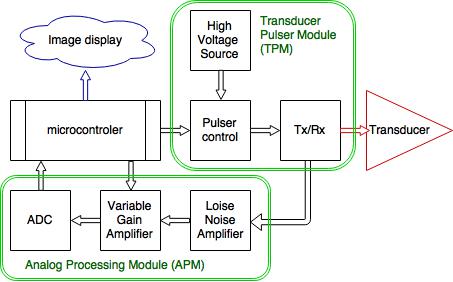 The microcontroler is at the moment a Feather WICED, the transducer one found on eBay, and the two custom boards (the
The microcontroler is at the moment a Feather WICED, the transducer one found on eBay, and the two custom boards (the 






